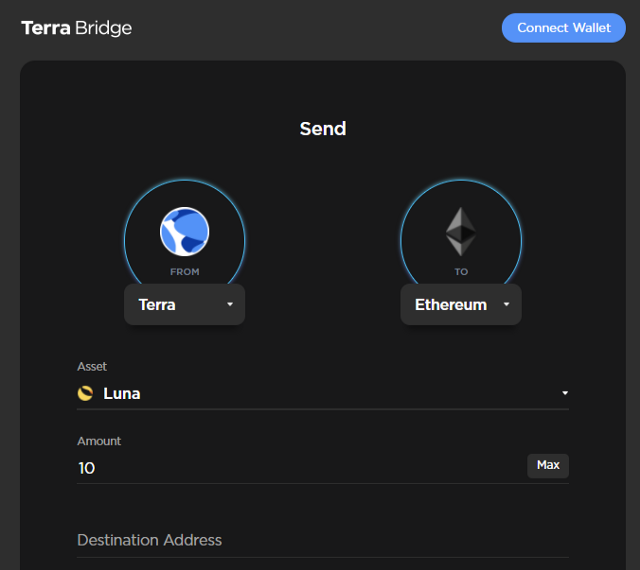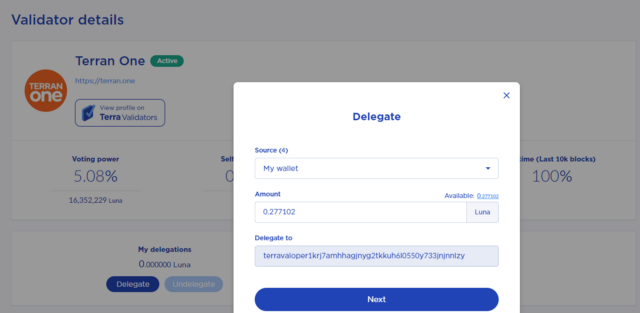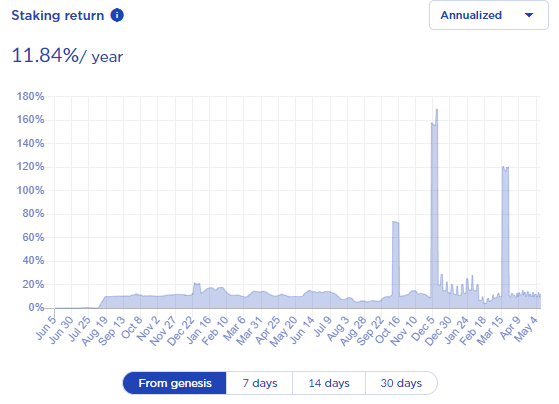What is Terra
Terra is the proof-of-stake (PoS) blockchain project co-founded by Do Kwon and Daniel Shin, who also founded TMON, one of the largest e-commerce firms with annual transactions of 4 trillion won (US$3.50 billion).
Terra is a decentralised and permissionless blockchain protocol that leverages a native token, LUNA, to collateralise and support a range of fiat-pegged stablecoins such as UST pegged to USD.
Terra focuses on interoperability, and it already has DApps on its blockchain that are looking to solve three huge problems in Finance across payments (Chai), investments (Mirror) and savings (Anchor).
Similar to the Ethereum blockchain, Terra charges transaction fees when executing smart contracts. These fees are rewards for stakers in return for them helping execute these transactions on Terra blockchain. In addition to the transaction fees, stakers also earn from taxes and seigniorage rewards which should grow as more transactions take place on the blockchain.
**
How to Buy LUNA**
In order to stake on Terra blockchain, you must get hold of LUNA tokens first. One way to get hold of them is to buy them off crypto exchanges. Some popular exchanges that offer LUNA include Binance, Huobi and Kucoin.
Otherwise, you can simply convert your funds into UST via Uniswap or Pancakeswap before moving them into the Terra blockchain via the Terra bridge which currently links up with Ethereum and Binance Smart Chain blockchains.
Once you have successfully purchased LUNA and have them in your Terra wallet, you are ready to stake.
**
How to Stake**
First, go to Terra Station and look for the Staking link. You should be able to see the names of eligible validators.
Select the validator that you feel most comfortable with and the Delegate option should now be available to click. Click Delegate and you should be able to select the amount of LUNA to delegate to the validator.
It is recommended that you do your research before choosing any validator. If the validator fails to perform its job properly, both your delegated stake and also the validator’s own stake could be at risk of being penalised by up to 30% of the stake being slashed.
For that reason, aside from Validator Commission rate, other criteria such as Uptime is a useful factor in assessing the quality of the validator. Self-Delegation rate is another important signal, as it suggests that the validator has skin in the game and will less likely act in a manner that is detrimental to their own stake. More details may be found in the article How to Choose a Validator on Terra.
**
What Next**
Once you have successfully staked your LUNAs, you can simply sit back and wait for your staking rewards to accrue. Based on historical trends, LUNA rewards tend to range between 10–12% APY, although there have been occasions whereby annualised returns went up to 80–160%, even if it is for a couple of days.
Also, note that the staking rewards may be in the form of airdrops for other projects such as Mirror (MIR) and Anchor (ANC) tokens. If you are bullish about the long term prospects of these projects, you can hold them or even stake them on their respective platforms. Otherwise, you can always swap them immediately for either LUNA or UST via Terraswap, also available on Terra Station.
Happy Staking~!




Hello.
Welcome to Hive.
To confirm your authorship of the content, could you please mention the word "Hive" in your Twitter profile:
https://twitter.com/AuraStake
You can remove this mention, once we confirm the authorship.
Thank you.
More Info: Introducing Identity/Content Verification Reporting & Lookup
GET LOST!!!... welcome to HIVE my ass!
YOU DON'T OWN HIVE ASS... You HARASS people here!
GET IT STRAIGHT!